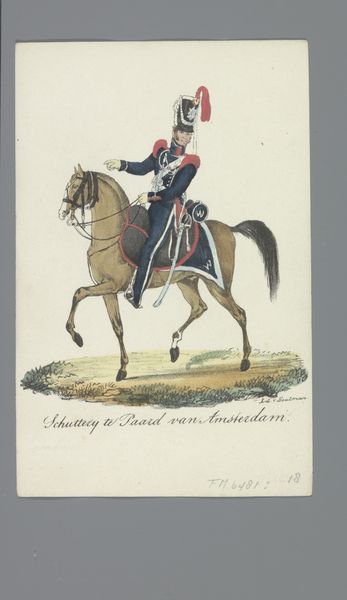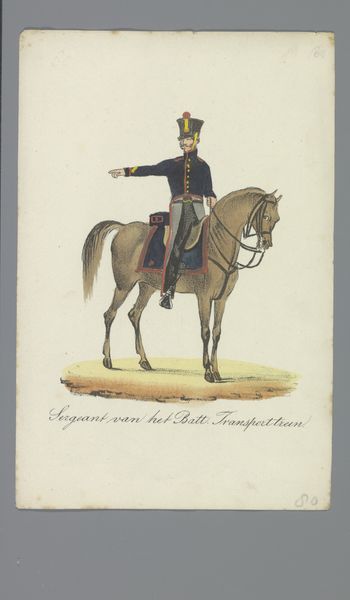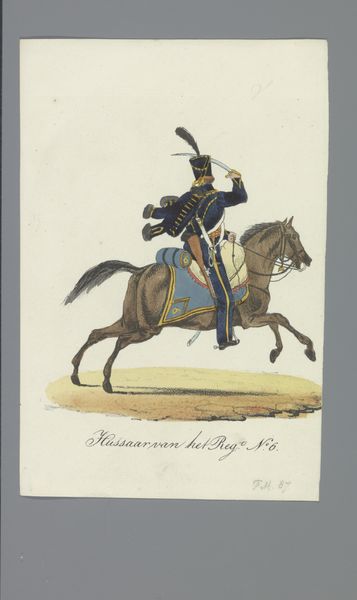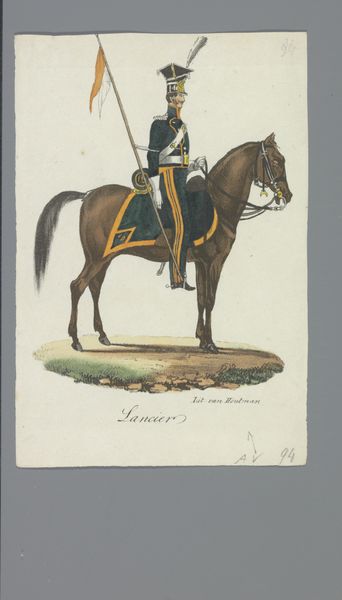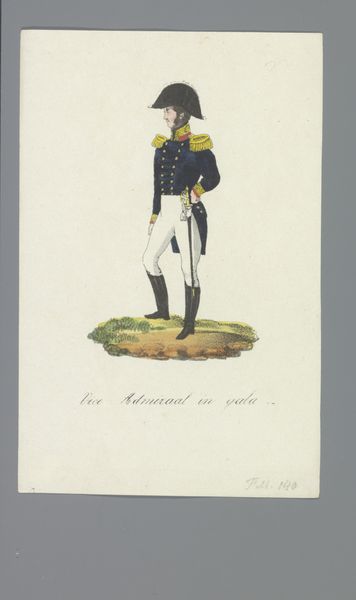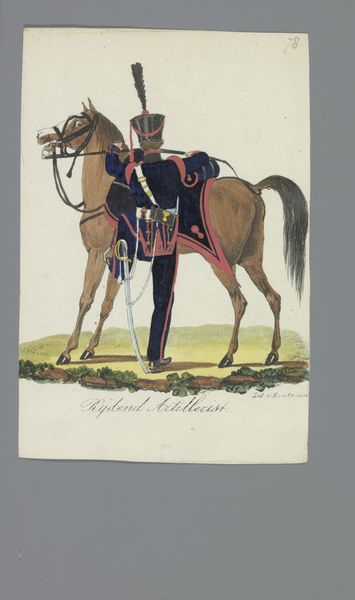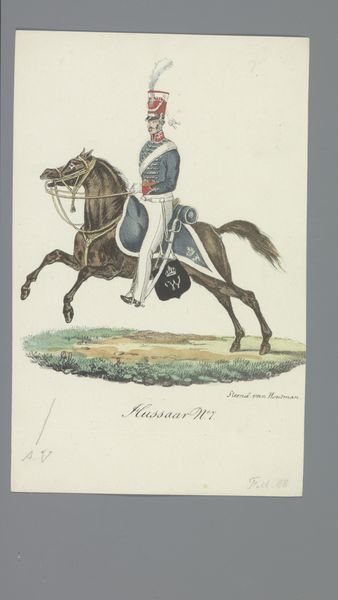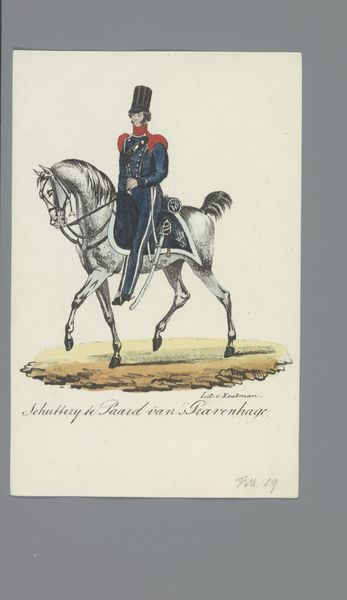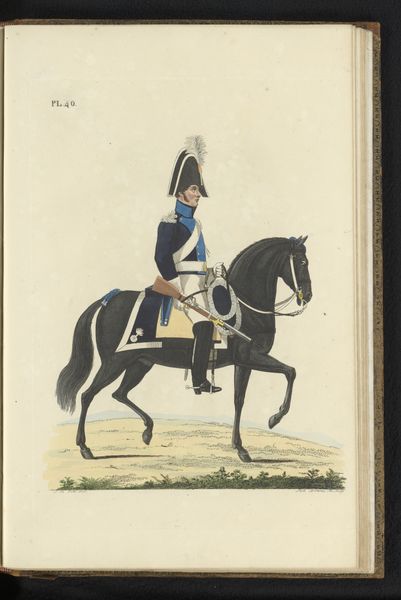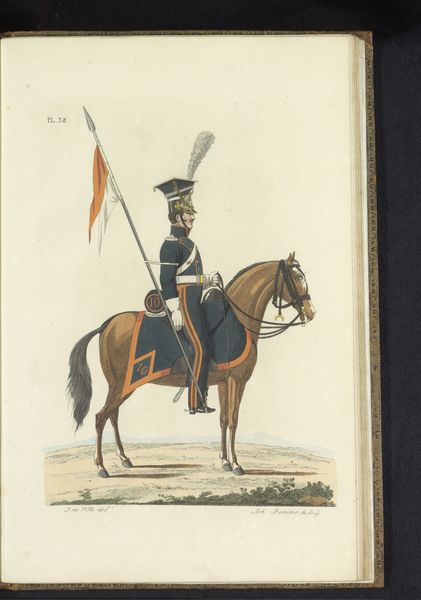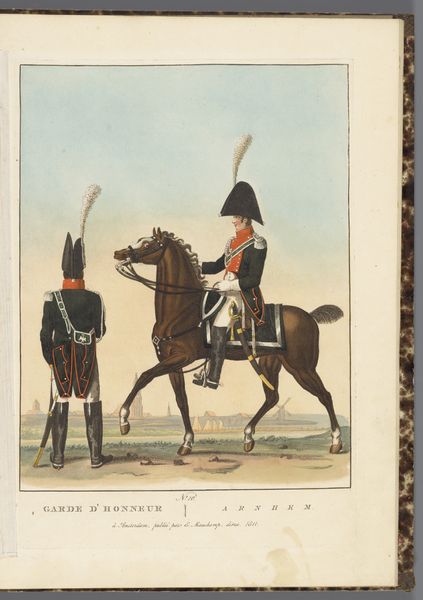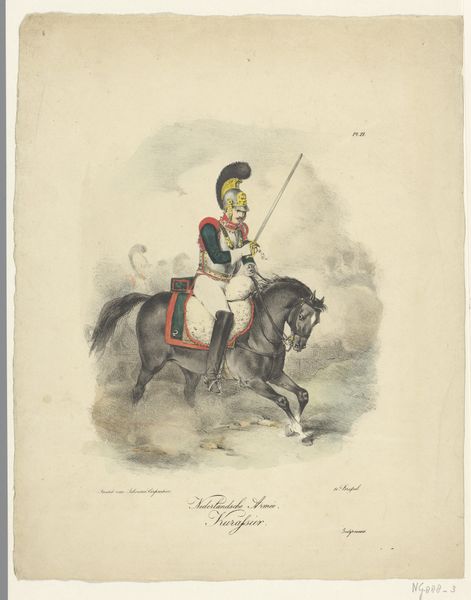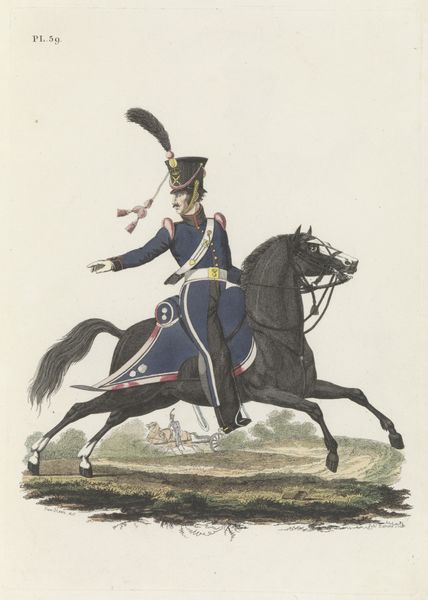
watercolor
#
portrait
#
watercolor
#
romanticism
#
genre-painting
#
watercolor
Dimensions: height 170 mm, width 110 mm
Copyright: Rijks Museum: Open Domain
Editor: Here we have Albertus Verhoesen's watercolor, "Officier der Artillerie Transp: trein," created sometime between 1835 and 1850. I’m immediately struck by the formality of it; the officer seems so stiff, and the whole piece feels rather staged. What do you make of this depiction, and its purpose, Curator? Curator: Considering the social history, these types of paintings served as both records and subtle propaganda. The piece reflects the rising importance of a professionalized military and the need to project power and order following the Napoleonic era. What do you notice about his uniform, particularly the details around the shoulders? Editor: Well, the gold epaulettes are pretty ostentatious, a real marker of rank and status. Does that level of detail tie into that idea of projecting power? Curator: Precisely! The painstaking rendering of each button, each piece of trim, presents the officer as a figure of authority within a well-oiled machine. Consider where this might have hung - perhaps in a government building, or even the officer's home - reinforcing his place in the social order. Editor: That's interesting. So it’s not just a portrait of a man, but also a statement about the military's role and visual impact. I hadn't thought about that. Curator: Indeed. The “portrait” participates in a broader political project. Did our conversation alter how you perceived its "staged" effect from our introduction? Editor: Definitely! It adds a layer of meaning to what I saw as stiffness; it’s intentional, a carefully constructed image.
Comments
No comments
Be the first to comment and join the conversation on the ultimate creative platform.
